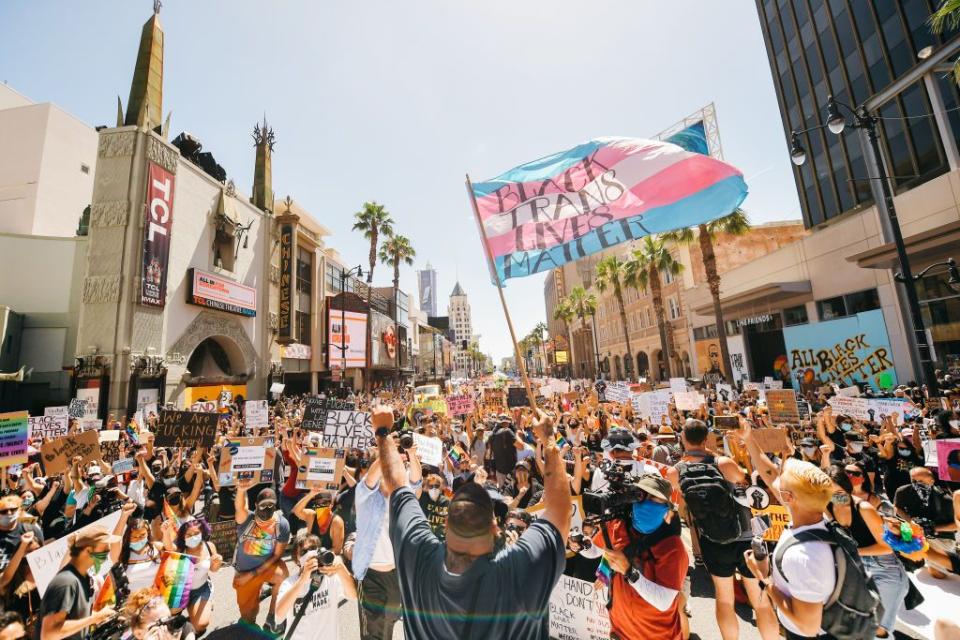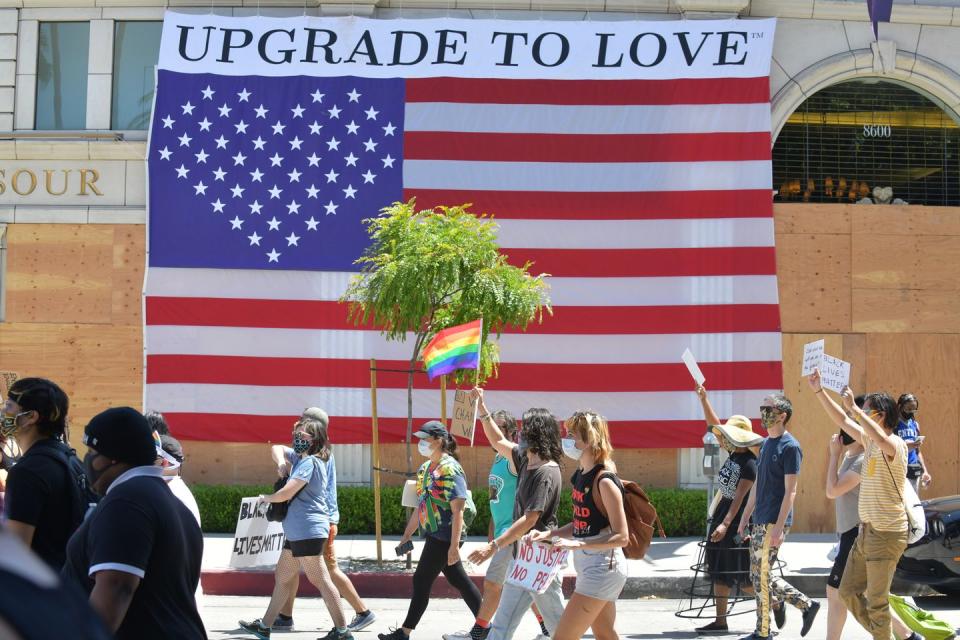What to Do if You Witness a Hate Crime (Or Are The Victim)

According to a 2018 report from the F.B.I., there were 7,120 incidents classified as hate crimes involving 8,496 offenses. 59.6% of those cases were multiple-bias race incidents and 16.7% sexual orientation related. Over half of the offenders were white. These staggering numbers aren't taking into account the recent deaths of George Floyd, Breonna Taylor, Tony McDade and other people of color. What happens if you find yourself witnessing a hate crime or actually being the victim? What this is telling us is something has to change. We can't continue to allow hate crimes to happen especially to our BIPOC communities. As with anything else, the first step in stopping these horrendous acts is education and inclusion.
Hate crimes are not exclusive to physical violence or out in public. According to the Trans Mental Health Survey conducted in 2017, "53.15% of the over 8,000 respondents said they have avoided inpatient, outpatient, therapy or psychiatric facilities due to fear of mistreatment or discrimination" and during hospitalization, "41.92% experienced repeated, purposeful misgendering, 23.69% were harassed by employees, fellow patients & counselors, 19.58% were outed non consensually, 11.59% were asked to discuss or show genitals without medical necessity."
The first hate crime law was enacted in 1968 and only covered race, color, religion or national origin in its decree. In 2009, President Obama signed the Matthew Shepard and James Byrd, Jr. Hate Crimes Prevention Act which expanded the law to cover gender, sexual orientation, gender identity and disability. Here's what to do if you witness a hate crime (or are the victim):
Witness: Put yourself between the perpetrator and victim
Often times we witness hate crimes (in different forms) on public transportation, healthcare centers and public spaces. Every situation is different, but making yourself a barrier between the perpetrator and the victim is one way to protect the person being victimized. "Focus on the person that is experiencing the harassment. Start talking to the person that is being targeted. Make sure the person that is harassing knows you’re there and in between them and the victim." IV Staklo, Hotline Program Director of Trans Lifeline says.
Every situation is different and violent scenarios can require different approaches. If you witness a violent hate crime, run to the nearest point of help while keeping eyesight of what's going on. By telling the perpetrator that you're doing this may give the victim enough distraction to get to safety.
Victim: Try and remember everything
Staying focused while you're in the middle of an attack can be extremely difficult and anyone telling you to calm down should be ignored completely. Adrenaline spikes when you're in a heightened mood and calming down doesn't work with just words. If possible, try and remember things like what the perpetrator looks like, what your surroundings appear to be and who was around. Once you're in a safe space, write them down.
"When we talk about safe spaces and safe providers there is never one that is 100% safe because transphobia and racism is rampant in places like medicare and law enforcement. There is a number of things people can to do to get recourse. Think about when you’re going into a space, what are the possible risks? Write them down and talk to someone before going. It’s always good to look into what your rights are in your state and what your options are for recourse." says Staklo.

Witness: Put your phone down
One common trend during hate crimes is to record it while it's happening. While this trend may be good for awareness, it's worse for the victim at the current time. If there is a hate crime happening, look at your surroundings. Are there businesses with cameras around? If you're in a well-lit area with multiple businesses there is a chance security cameras are in-use. Take note of what those businesses are for gathering information later on. Use the time to put yourself between the victim and the aggressor and create a distraction to give the victim an opportunity to move to a safer space.
Victim: Seek support and don't blame yourself
You're not alone! Even if you're in an unknown area make sure to get yourself to someplace safe. A safe place can be anywhere where you feel out of danger. If you need someone to talk to, call/text Trans Lifeline or Crisis Text Line. Both services offer 24 hour help and can talk you through next steps. Remember that whatever happened is not your fault. Your existence shouldn't be the cause for any type of attack both verbal or physical.

Witness: Let the victim feel
Often times, people with good intentions will make the worst calls. If someone has just experienced a hate crime, make sure to ask them what they need instead of assuming they want to call the cops right away. Victims are often in a state of shock and don't understand nor realize what just happened. Calling the cops is not always the answer. As a witness to a crime, your first act should be about the victim and sometimes calling the cops can be a retraumatizing experience. Let the victim tell you what they want. If you feel like they should report something to the authorities but are unable to at the time, keep in contact.
Victim: Realize that not all hate crimes are physical
Discrimination comes in many forms and sometimes they're not all physical. "Behaviorally, a hate crime is about offensive behavior, such as physical assault, damage to property, bullying, harassment, verbal abuse, insult, propaganda, or offensive graffiti." as defined by Victim Support Services in Washington.
Verbal attacks can happen to anyone at any moment. "The most common places transphobia was reported & tagged as having been experienced were: public spaces, doctors / hospitals / mental health providers & in interaction with the legal system or law enforcement. For youth, schools were also high on the list. Types of transphobic treatment have included misgendering & deadnaming, verbal & emotional abuse and physical or sexual assault." Staklo from Trans Lifeline tells Redbook.
Witness: Be an ally
Just because you don't belong to a specific race or ethnicity, doesn't mean you can't empathize with a hate crime victim. We're all different and our uniqueness is what makes us human. By standing up for someone that is experiencing a hate crime, you not only showcase the best in humanity, you prove to the world that we can live harmoniously. Being an ally doesn't take much. Start with just an open mind and receptive heart.

Victim: Don't let an attack define you
We are more than just hate crimes and if you find yourself in one, don't let that determine who you are. An article from Psychology Today mentions, "Rewriting one's story and putting trauma in context has been shown to be an effective method for getting out of survival mode and shifting our approach to ourselves, others, and life in general. It's easier said than done, because doing so involves further engagement with very challenging subjects." You are vastly more beautiful, intelligent and complex than a single act of hate. By letting an attack define you, you let hate win.
You Might Also Like

